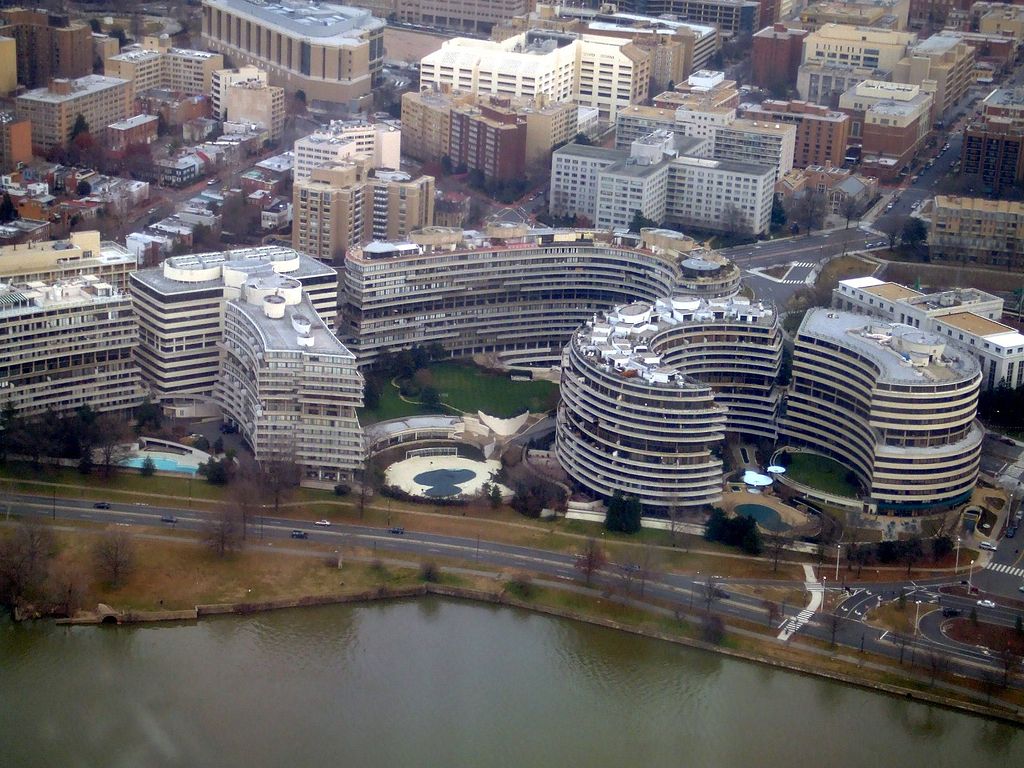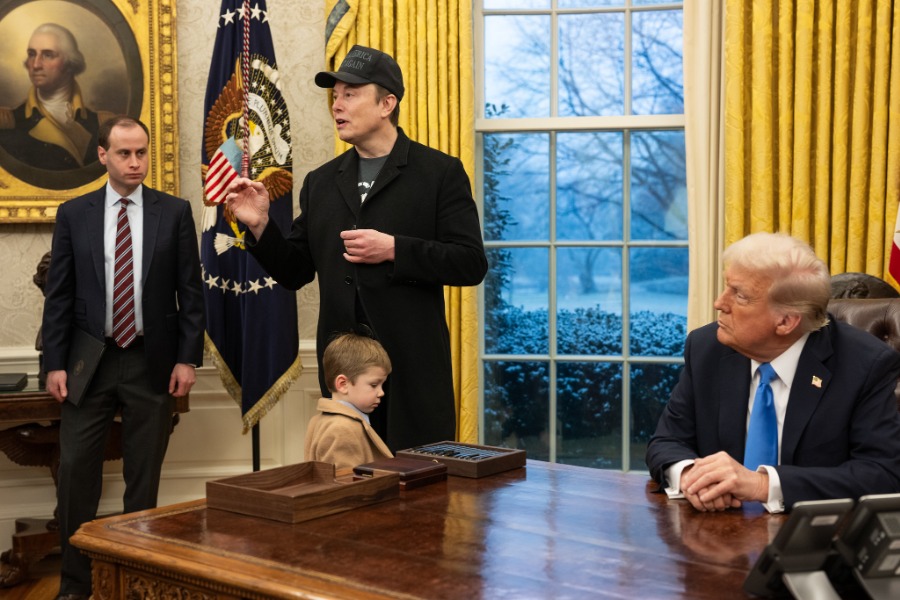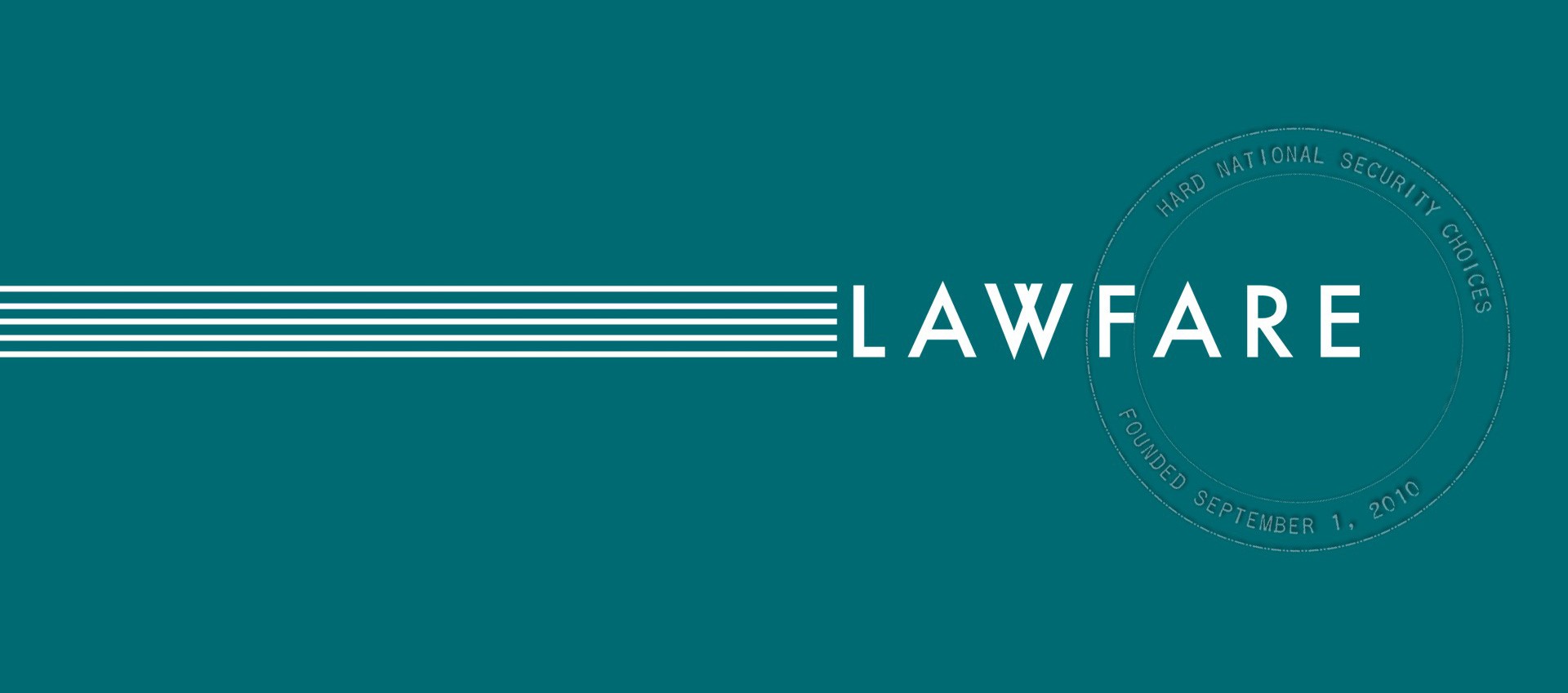Jaworski’s Road Map May Not Guide Mueller
Special Prosecutor Leon Jaworski’s report to the House of Representatives hastened the impeachment of President Nixon in 1974. Now that Jaworski’s “road map” has been made public, after 44 years under judicial seal, Robert Mueller may be able to use it as a template for his own impeachment report—assuming that he’s preparing one.

Published by The Lawfare Institute
in Cooperation With

Special Prosecutor Leon Jaworski’s report to the House of Representatives hastened the impeachment of President Nixon in 1974. Now that Jaworski’s “road map” has been made public, after 44 years under judicial seal, Robert Mueller may be able to use it as a template for his own impeachment report—assuming that he’s preparing one.
But Mueller shouldn’t pin too much hope on the road map. Jaworski insulated his office from the partisan taint of impeachment through a series of wise decisions, of which the style of the road map was only one. Further, Richard Nixon unexpectedly gave him additional cover by opting not to fight transmittal of Jaworski’s evidence to the House. Mueller may not have the same options as Jaworski, or benefit from the same decision by the president. And in one important respect, Jaworski’s bare-bones road map might be a bad model for Mueller.
First some background. To aid the House Judiciary Committee’s impeachment effort, Jaworski’s prosecutors assembled evidence and summarized it in a report that they called the road map. On Mar. 1, 1974, Jaworski’s prosecutors gave Judge John Sirica a briefcase containing evidence and the road map. In a cover note, the grand jurors asked that the material be turned over to the House. H. R. Haldeman, John Ehrlichman, and others then tried to stop transmittal of the briefcase, on the ground that the publicity would prejudice their upcoming trials. Judge Sirica rejected the argument, and the U.S. Court of Appeals for the D.C. Circuit declined to intervene. On Mar. 26, Judge Sirica gave the briefcase to the senior staff of the House Committee on the Judiciary. The staff, in turn, used the road map and evidence to help develop impeachment articles against President Nixon.
In his memoir, “The Right and the Power,” Jaworski stresses his commitment to minimizing the risk of prejudicial pretrial publicity. But documents from the office—some released last week, some earlier—along with books by Jaworski and his staff suggest a second goal as well. Jaworski sought to avoid coming across as the driving force behind the impeachment. He knew that if he allied himself with the impeachment effort, it would diminish his office’s reputation for nonpartisan law enforcement. Accordingly, he took four steps to protect himself.
First, when members of Congress pressured him to turn over evidence for the impeachment investigation, Jaworski refused for weeks. He wanted Congress to request the evidence by filing a formal motion with Judge Sirica. But House leaders declined, on the theory that because the House has sole constitutional authority over impeachment, it must not solicit the help of the judiciary. Jaworski also wanted assurances that the grand jury evidence would remain secret, to avoid prejudicing the upcoming trials. The judiciary committee did comply with this request by adopting strict secrecy rules. Through such back and forth, Jaworski could portray his aid to the impeachment effort as reluctant, cautious, and professional.
Second, Jaworski appears to have kept his name and the name of his office off of the road map. (The document released last week by the National Archives has a handful of redactions, though none seems likely to refer to the prosecutors.) Instead, he framed the document as a grand jury report. That format, as Jack Goldsmith and Benjamin Wittes point out, bolsters the report’s nonpartisan, we-the-people authority. It also plays down Jaworski’s responsibility for helping impeach the president.
Third, at Jaworski’s urging, Judge Sirica kept the road map secret. The judge placed the road map as well as the evidence under judicial seal. Partly as a result, the document all but vanished from the public consciousness after the briefcase reached the Judiciary Committee. The House investigation and ultimately the articles of impeachment took center stage, while Jaworski made a point of staying offstage. From 1974 to last week, the road map remained secret.
Finally, there’s the much-discussed structure and style of the road map. It’s “a simple and unimpressive document, for it is narrow, declaratory, without conclusions,” James Doyle, the Watergate prosecutor’s press representative, writes in his book “Not Above the Law.” Judge Sirica likewise stressed the non-accusatory nature of the road map in his ruling. Goldsmith and Wittes find it striking, too. The omission of accusations and conclusions once again helped Jaworski minimize his role.
In addition to his decisions, Jaworski benefited from a piece of good fortune. President Nixon, through his lawyers, took no position on whether Judge Sirica ought to transfer the briefcase to the House. The president could have argued that Jaworski had no business passing grand jury evidence to Congress. He could have attacked the prosecutors as handmaidens of a partisan impeachment effort. He didn’t.
What, then, are the implications of Jaworski’s impeachment report for the Mueller investigation? Mueller probably can issue his findings in the form of a grand jury report, like Jaworski, but other features of 1974 seem less likely to recur. So far, the House isn’t clamoring for Mueller’s evidence, and impeachment proceedings aren’t under way—though this may change when a new, Democratic-controlled Congress is sworn in this coming January. If Mueller ends up jump-starting impeachment proceedings, rather than aiding proceedings already in progress, he may be more vulnerable than Jaworski to charges of partisanship. Because impeachment proceedings haven’t yet begun, in addition, the public might respond unfavorably to an impeachment report that, like the road map, stays secret. This president, further, might fight to prevent an impeachment report from reaching Congress, and in the process assail Mueller for partisan motivations and actions.
As for the prose, the road map omits j’accuse, as Goldsmith and Wittes point out. It doesn’t argue that President Nixon violated any statute, or that he committed any high crimes and misdemeanors. But I wonder if the document also omits the acknowledgment of tensions in the evidentiary record.
The road map, at least the portions that have been made public, never mentions evidentiary conflicts. One fact inexorably follows another, and none of the facts seems to be disputed. Sometimes, the document says only that a meeting occurred without stating what was discussed, perhaps indicating that all witnesses agreed on the fact of the meeting but not on the discussion. In other passages, the road map describes topics discussed at a meeting, sometimes citing White House tapes as sources. In setting forth details of a meeting of Mar. 21, 1973, between President Nixon, John Dean and H. R. Haldeman, for instance, the road map cites only White House tapes. Haldeman’s grand jury testimony appears in footnotes elsewhere in the report, but not here. Did Haldeman’s testimony on this point match the tapes? Did they conflict? Did he not remember? Did he take the Fifth? Was he not asked?
One might answer those questions with another one: Who cares? The White House tapes may not be utterly definitive—to begin with, there’s the famous 18-and-a-half minute gap, which White House chief of staff Alexander Haig posited might be the fault of “some sinister force.” But they’re close to definitive. Certainly they’re more compelling than any witness’s recollections.
I don’t know whether the road map leaves out any conflicts between a witness’s testimony and a White House tape, but it wouldn’t surprise me, and it wouldn’t trouble me. Conceivably, the prosecutors might also have made decisions about the credibility of witnesses when testimony diverged, even without White House tapes as best evidence. We may never find out, given that most of the grand jury proceedings remain secret.
If Mueller lacks White House tapes or other nearly airtight evidence, and if the accounts of witnesses and the documentary evidence don’t match up on every important point, he’ll need to outline the inconsistencies. In that respect, he’ll face a task less like Leon Jaworski’s in 1974 than like Kenneth W. Starr’s in 1998, when President Clinton’s testimony conflicted with Monica Lewinsky’s. The Starr Report, which I worked on, made the case for Lewinsky’s credibility over Clinton’s. Mueller won’t necessarily have to endorse one account over another, but I think he will have to lay out the conflicting accounts where they occur.
Far more than Jaworski’s road map, what sets Watergate apart from other presidential scandals is the White House recording system. Thanks to the tapes, as James Fallows wrote in The Washington Monthly in 1979, “contrary to the whole human history of high-level scheming, the smoking gun actually appeared.” In summarizing the evidence against President Nixon, Jaworski’s road map shows a single path, start to finish, with no options, no alternative routes. Mueller’s summary of the evidence against President Trump, by contrast, almost surely will show forks in the road.




